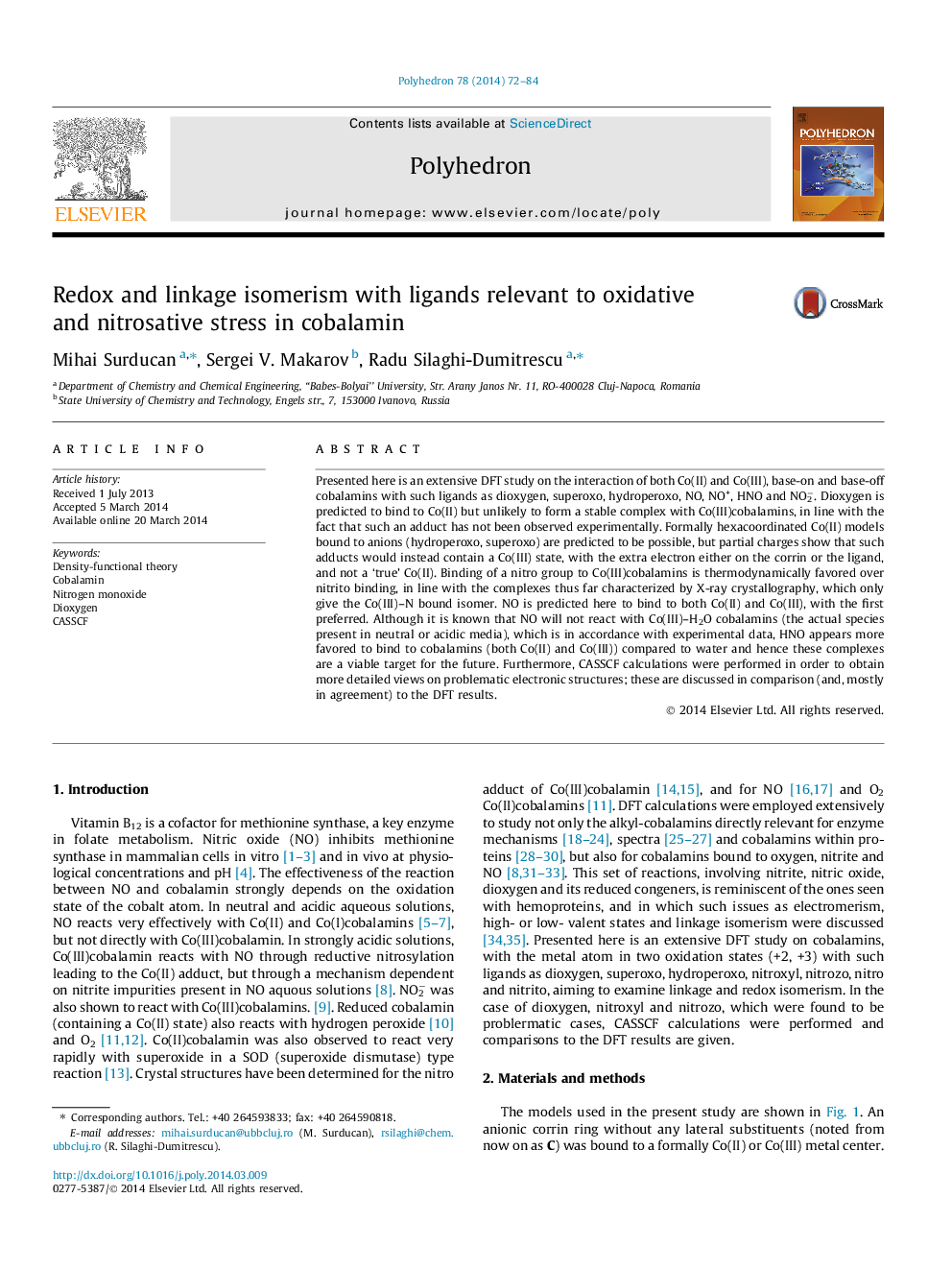| Article ID | Journal | Published Year | Pages | File Type |
|---|---|---|---|---|
| 1337825 | Polyhedron | 2014 | 13 Pages |
Presented here is an extensive DFT study on the interaction of both Co(II) and Co(III), base-on and base-off cobalamins with such ligands as dioxygen, superoxo, hydroperoxo, NO, NO+, HNO and NO2−. Dioxygen is predicted to bind to Co(II) but unlikely to form a stable complex with Co(III)cobalamins, in line with the fact that such an adduct has not been observed experimentally. Formally hexacoordinated Co(II) models bound to anions (hydroperoxo, superoxo) are predicted to be possible, but partial charges show that such adducts would instead contain a Co(III) state, with the extra electron either on the corrin or the ligand, and not a ‘true’ Co(II). Binding of a nitro group to Co(III)cobalamins is thermodynamically favored over nitrito binding, in line with the complexes thus far characterized by X-ray crystallography, which only give the Co(III)–N bound isomer. NO is predicted here to bind to both Co(II) and Co(III), with the first preferred. Although it is known that NO will not react with Co(III)–H2O cobalamins (the actual species present in neutral or acidic media), which is in accordance with experimental data, HNO appears more favored to bind to cobalamins (both Co(II) and Co(III)) compared to water and hence these complexes are a viable target for the future. Furthermore, CASSCF calculations were performed in order to obtain more detailed views on problematic electronic structures; these are discussed in comparison (and, mostly in agreement) to the DFT results.
Graphical abstractSpin densities on the base-on Co(II)–O2 and Co(II)–NO+ models.Figure optionsDownload full-size imageDownload as PowerPoint slide
